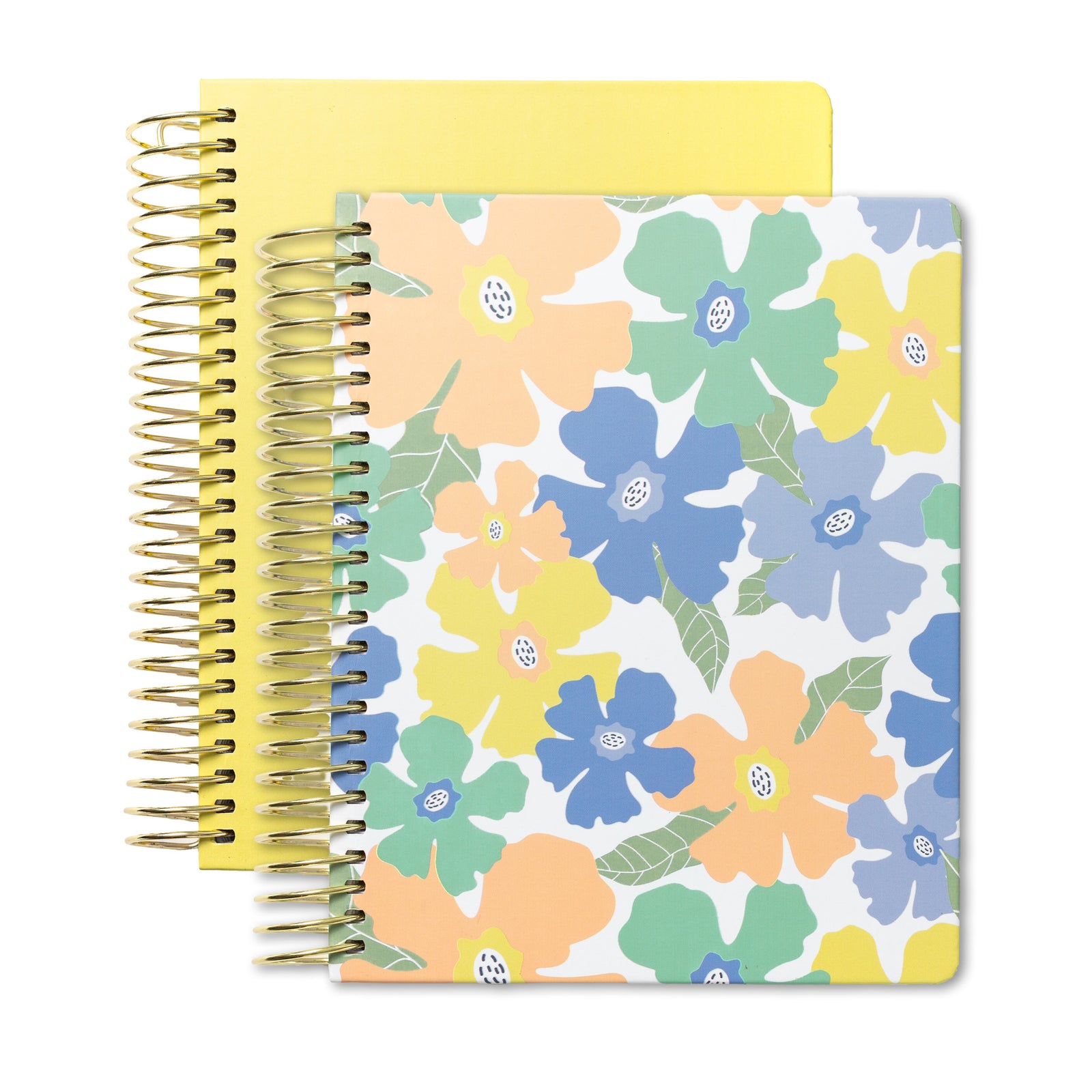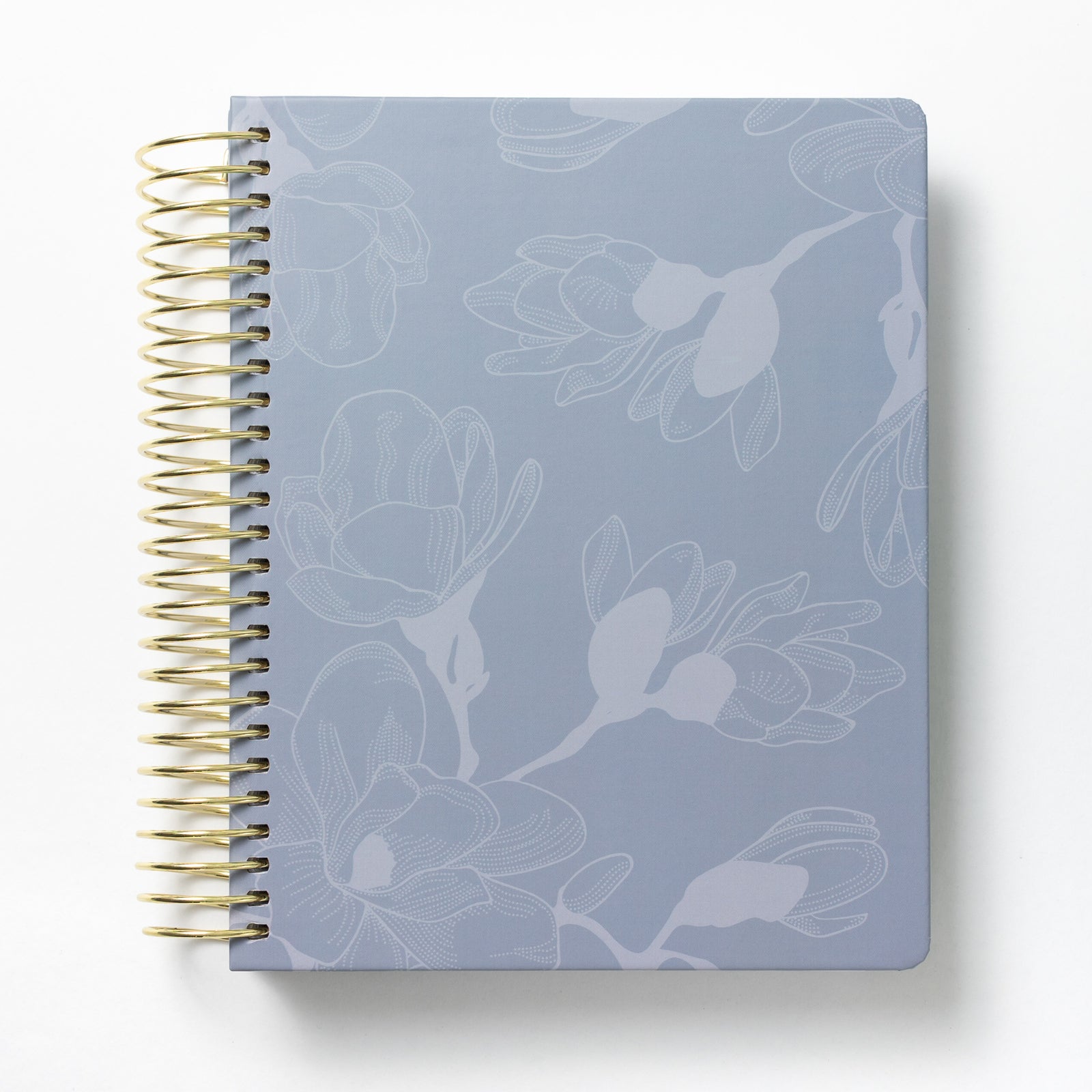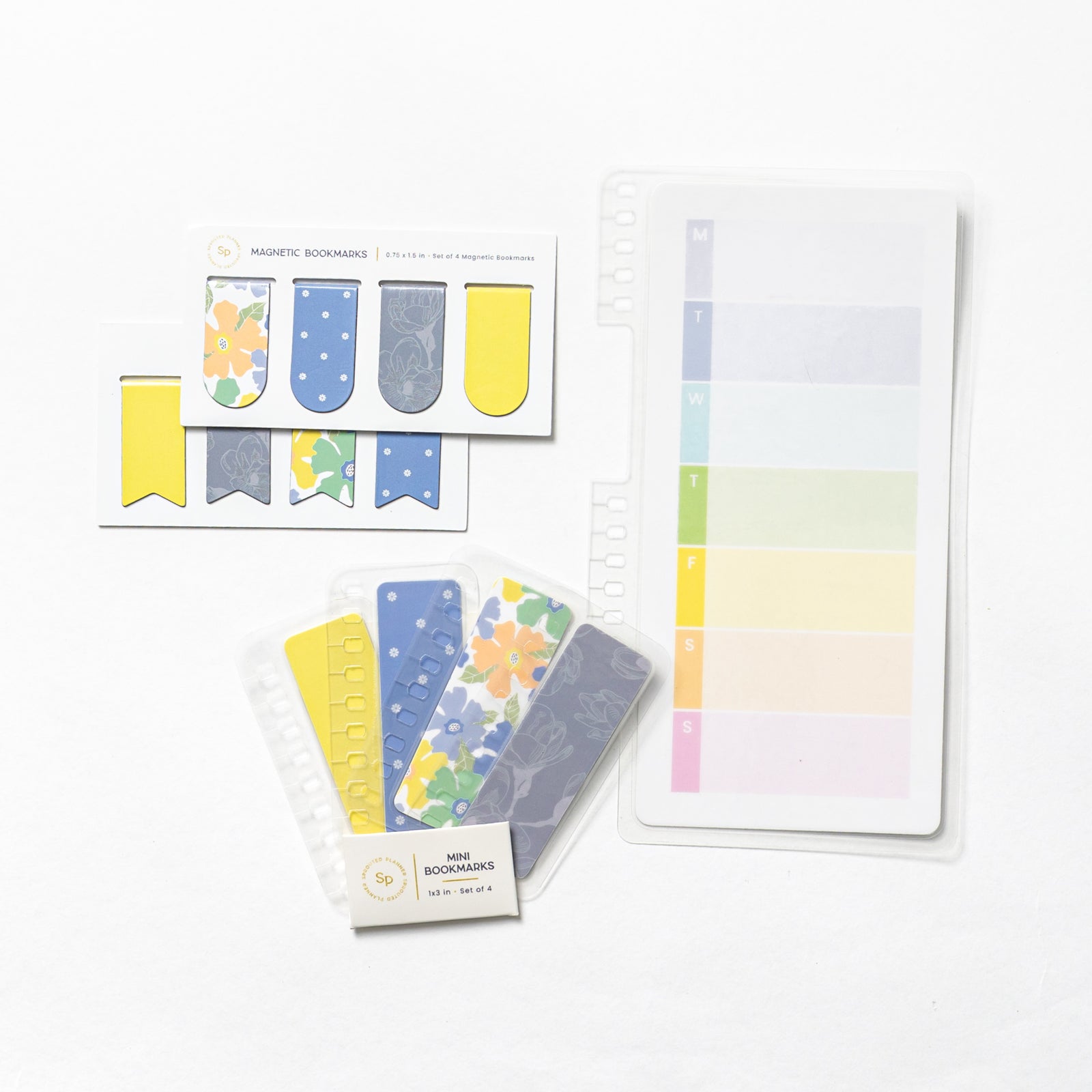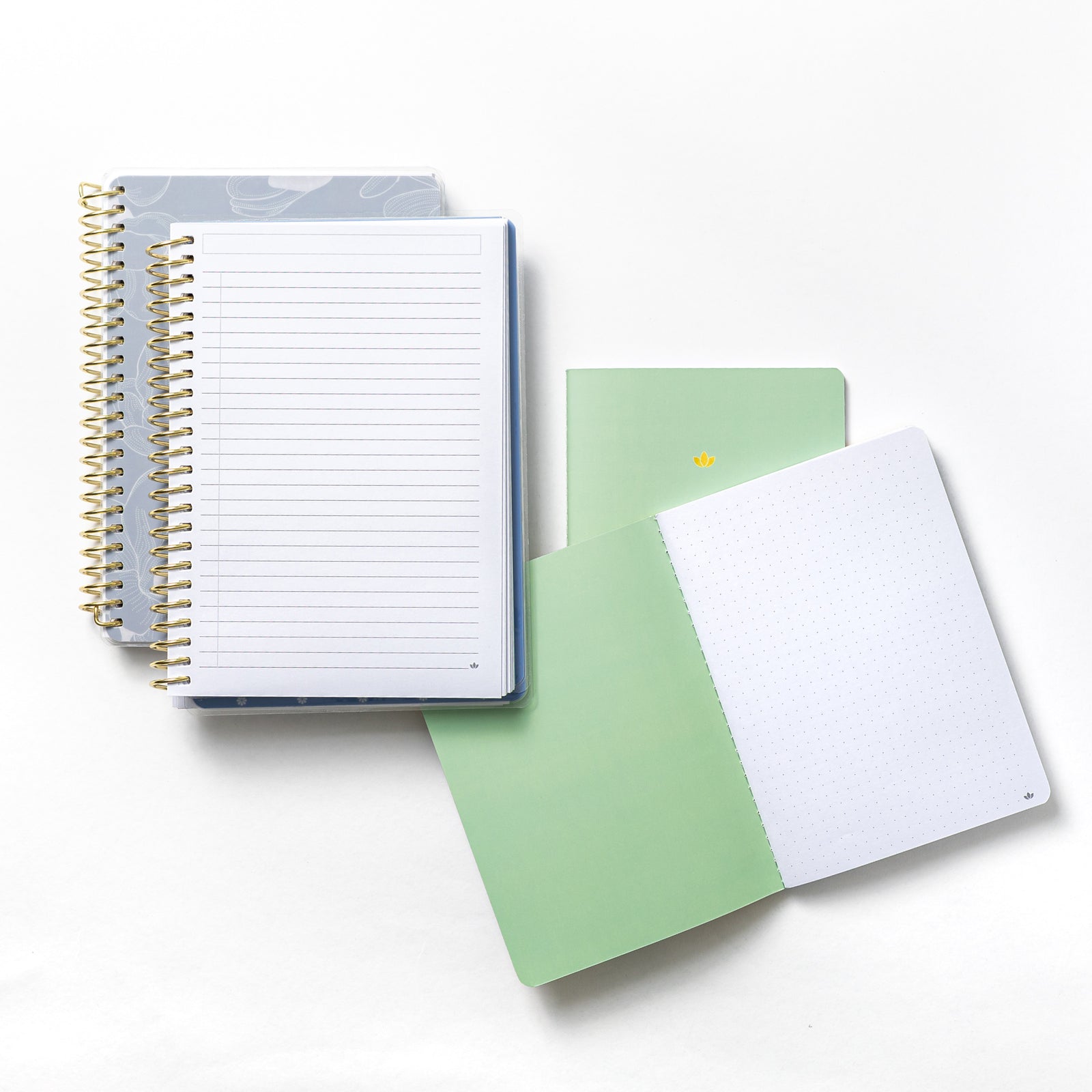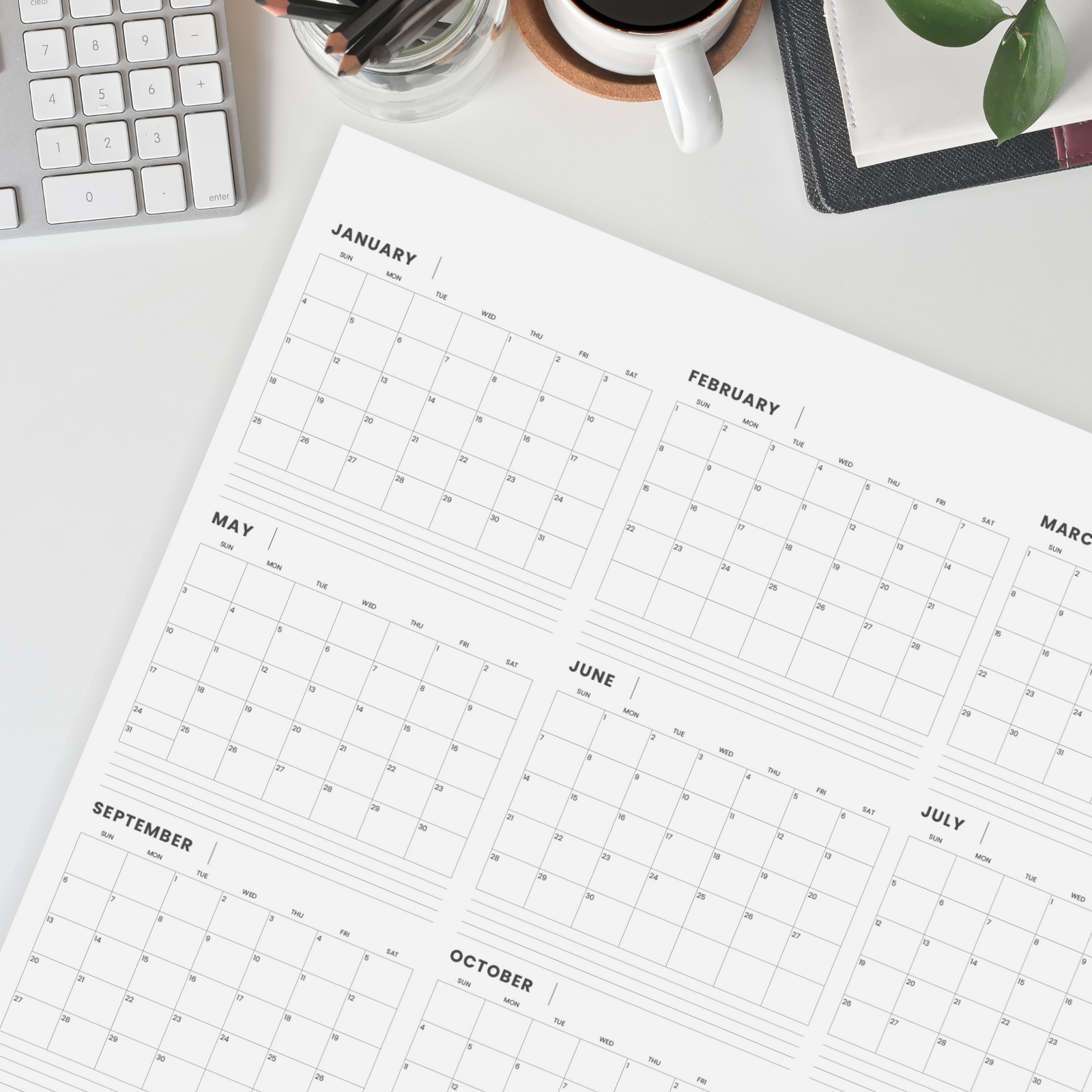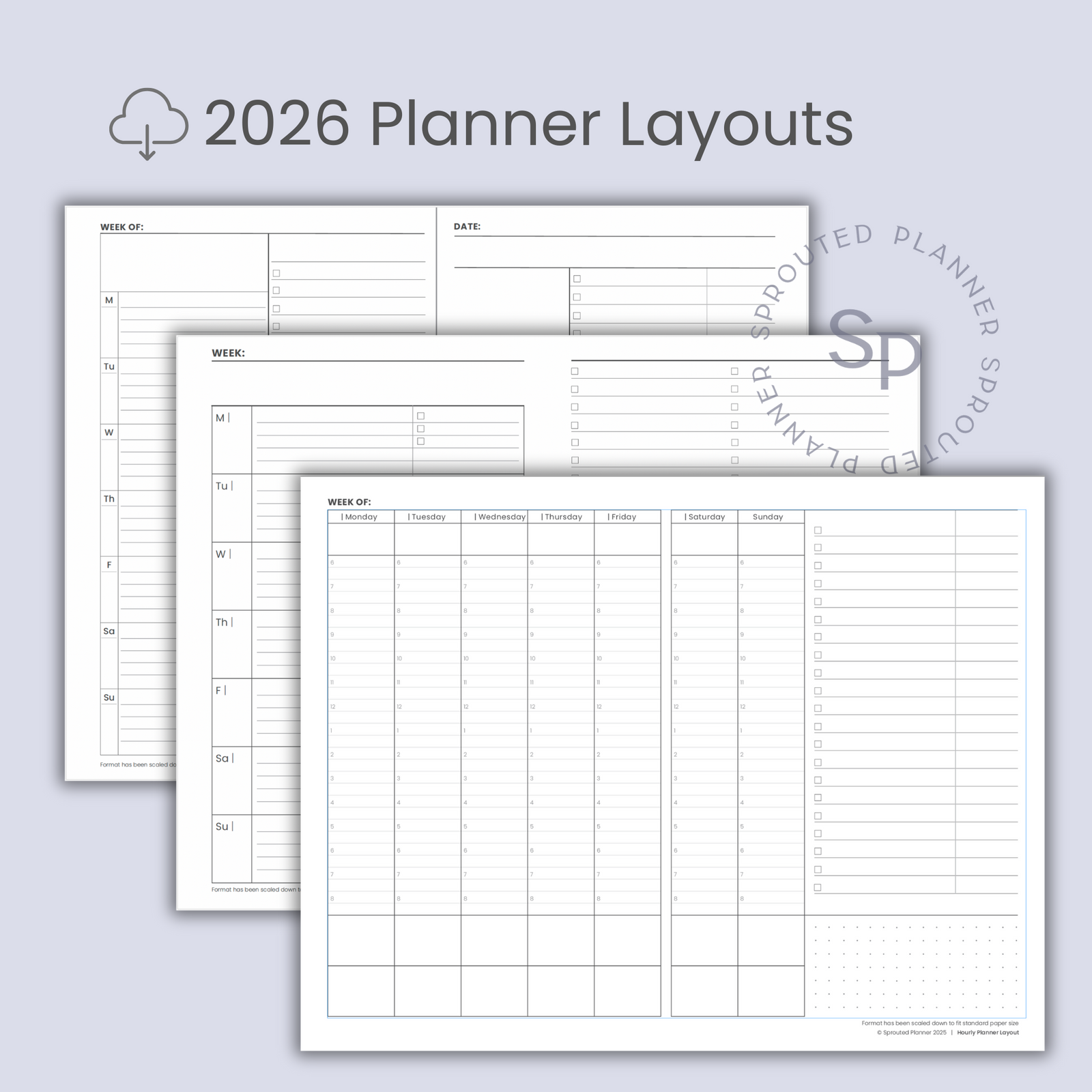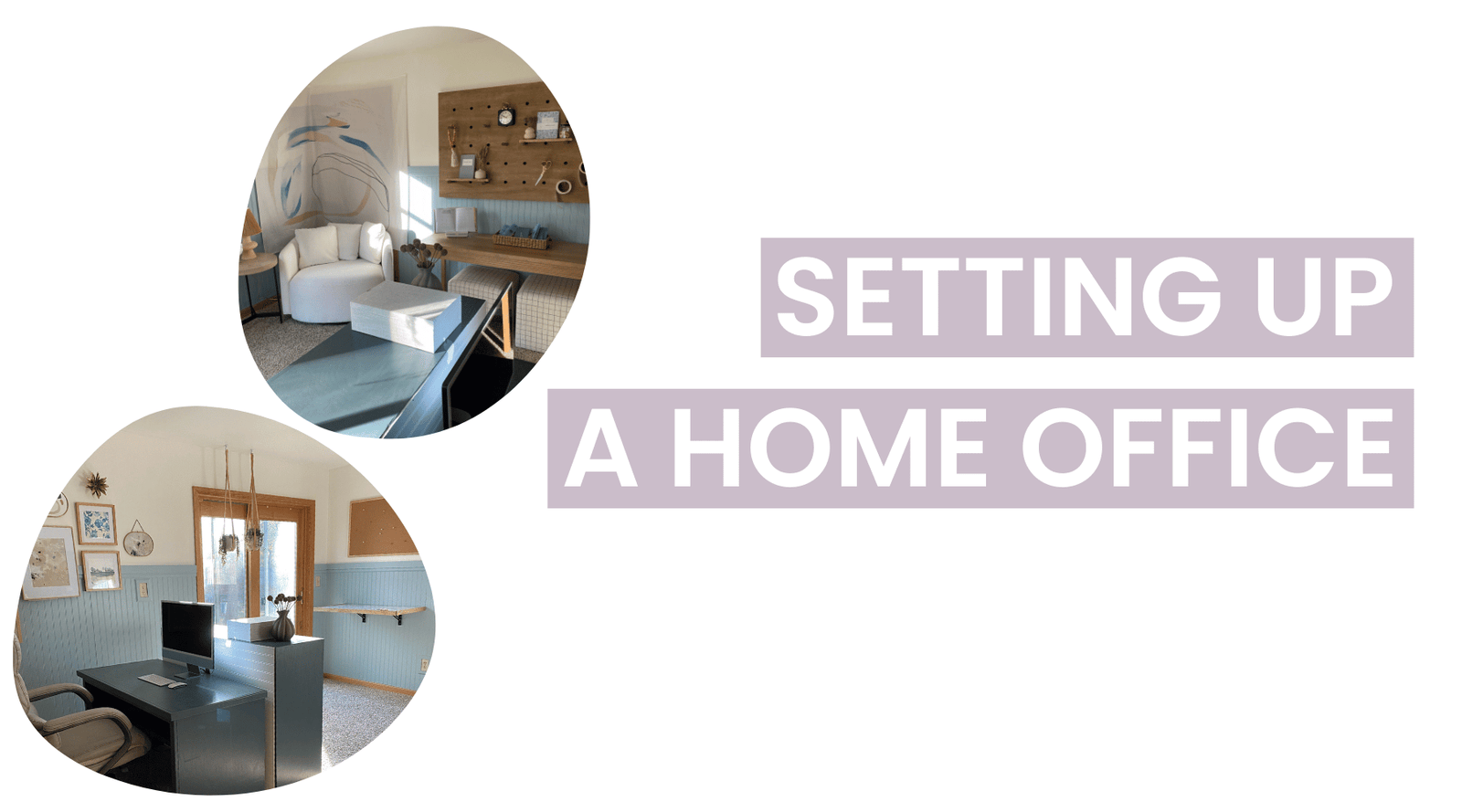A well-organized home office is vital for anyone who works from home, as it significantly impacts productivity and mental clarity. Having a dedicated, clutter-free workspace not only minimizes distractions but also promotes a more focused and efficient work environment. When you invest time in organizing your home office, you create a space that enhances your ability to concentrate and complete tasks effectively. One of the best tools to achieve this is a planner. Using a planner helps map out your daily tasks, set priorities, and maintain order in your workspace. By scheduling regular cleaning and organizing sessions, a planner can ensure that your home office remains tidy and functional. This organized setup not only improves your work performance but also creates a more pleasant and motivating atmosphere, enabling you to tackle your tasks with greater ease and consistency.
Assess Your Needs
Assessing your needs is crucial to creating an effective workspace. Start by determining your work requirements. Consider the nature of your job and the specific tasks you need to complete daily. Identifying these essentials will help you understand what tools and resources are necessary for you to work efficiently. Whether you need a powerful computer, specialized software, or ergonomic furniture, knowing your requirements lays the foundation for a productive office setup.
Next, identify the essential tasks and materials that will occupy your workspace. Make a list of the tasks you perform regularly and the materials you use most frequently. This could include documents, office supplies, or digital equipment. By organizing these essentials, you ensure that everything you need is within reach, reducing time spent searching for items and improving overall efficiency. A well-organized space not only enhances productivity but also reduces stress and clutter.
Finally, consider how your work style influences your office setup. Do you prefer a quiet environment, or do you thrive in a more dynamic setting? Using a planner to list and prioritize your needs can be incredibly beneficial. A planner helps you stay organized, keep track of deadlines, and allocate time effectively. By understanding your unique work habits and preferences, you can create a tailored workspace that fosters creativity and productivity. Optimize your office setup to align with your work style, and you'll find that staying focused and motivated becomes much easier.
Choose the Right Space
Selecting the optimal location in your home is crucial for creating a productive home office environment. The first step is to identify a space that can be dedicated solely to work, minimizing distractions and interruptions. Consider areas that are underutilized or can be easily repurposed, such as a spare bedroom, a corner in the living room, or even an attic or basement. This dedicated space will help establish a clear boundary between work and home life, fostering a more focused and professional atmosphere.
Evaluating different areas for suitability involves analyzing each potential spot in your home with a critical eye. Start by assessing the size of the space and whether it can comfortably accommodate your desk, chair, and any other necessary office equipment. Consider the layout of the room and how it can be configured to optimize workflow. Additionally, think about the proximity to power outlets and internet connections, as these are essential for a functional home office. By thoroughly evaluating each area, you can make an informed decision on the best location for your work environment.

The importance of natural light and quiet surroundings cannot be overstated when setting up a home office. Natural light not only creates a pleasant and inviting workspace but also has numerous health benefits, including boosting mood and productivity. Aim to position your desk near a window to take advantage of sunlight throughout the day. Additionally, a quiet environment is essential for concentration and focus. Choose a location that is away from high-traffic areas or noisy appliances, ensuring that you can work without constant interruptions. If necessary, invest in noise-canceling headphones or soundproofing solutions to create a peaceful workspace.
Planner tips for mapping out potential office areas can be invaluable in the process of setting up your home office. Start by sketching a floor plan of your home and highlighting the areas that you are considering for your office. Note the dimensions and any existing furniture or fixtures that may impact the layout. Use this visual aid to experiment with different configurations and determine the most efficient use of space. Additionally, consider ergonomic principles when arranging your office, ensuring that your desk and chair are positioned to promote good posture and reduce strain. By carefully planning and mapping out your office area, you can create a workspace that is both functional and comfortable.
Furniture and Equipment
Setting up an ergonomic workstation begins with securing essential furniture and equipment that promotes comfort and productivity. Start with the basics: a sturdy desk and an ergonomic chair designed to support long hours of work. These foundational pieces make a significant difference in maintaining good posture and reducing strain on your body. Consider sourcing high-quality furniture from reputable brands or retailers. Adding a few images of ideal ergonomic setups can help visualize the end goal and inspire your workspace design.

Ergonomic chairs and desks are critical components of a comfortable workspace. An ergonomic chair should have adjustable features such as seat height, armrests, and lumbar support to fit your body's specific needs. Pair it with a desk that can be adjusted to your preferred height, allowing you to alternate between sitting and standing throughout the day. Including links to reviews or buying guides for the best ergonomic chairs and desks can assist in making informed decisions. Visual aids showcasing various ergonomic furniture arrangements can provide practical examples.
In addition to furniture, necessary technology and accessories play a vital role in creating an efficient ergonomic workstation. A high-quality monitor that can be adjusted to eye level, a keyboard and mouse designed to minimize strain, and adequate lighting are all crucial. Consider investing in accessories like monitor stands, keyboard trays, and cable organizers to keep your workspace tidy and functional. Providing links to technology and accessory reviews or best practice guides can help users choose the right items. Including images of well-organized and ergonomically optimized workspaces can further enhance understanding and motivation.
To ensure all elements are in place, use a planner checklist for setting up an ergonomic workstation. This checklist should include steps for assessing current setup, measuring workspace dimensions, and evaluating necessary adjustments and additions. A comprehensive checklist can help track progress and ensure no detail is overlooked. Sharing a downloadable or interactive checklist can make the process smoother. Including images or diagrams of ergonomic principles and setup tips can be incredibly useful for visual learners.
By focusing on these key components—essential furniture and equipment, ergonomic chairs and desks, necessary technology and accessories, and a planner checklist—you can create an ergonomic workstation that promotes health, comfort, and productivity.
Have you heard of the standing desks? Click here to read why you should consider putting a standing desk in your office and what the benefits are!
Organize Your Supplies
Effective organization methods are crucial for maintaining a tidy and efficient workspace. By establishing a system that works for you, you can reduce clutter and improve productivity. Start by assessing your current setup and identifying areas that need improvement. Implementing a structured approach to organization will help you stay on top of tasks and responsibilities, ensuring that your office remains a functional environment.

Sorting and storing office supplies is an essential aspect of effective organization. Begin by categorizing your supplies into groups such as writing instruments, paper products, and miscellaneous items. Assign designated spaces for each category, making sure to keep frequently used items within easy reach. Regularly reviewing and decluttering these spaces will help maintain order and prevent the accumulation of unnecessary items.
Incorporating storage solutions like shelves and drawers can have a significant impact on your workspace. Shelving units provide vertical storage, which can free up valuable desk space, while drawers keep items neatly tucked away and out of sight. Consider using labeled bins or containers to further organize the contents of your shelves and drawers. Investing in high-quality storage solutions will not only improve your organization but also enhance the overall aesthetic of your office.
Using your planner for inventory tracking is a smart way to stay organized and ensure you never run out of essential supplies. Dedicate a section of your planner to list office supplies and keep track of their quantities. Set reminders to check your inventory regularly and reorder items as needed. This proactive approach will help you avoid last-minute runs to the store and ensure that your workspace remains well-stocked and efficient.
Click here to read "7 Tips for Organizing Desk Drawers for a More Efficient Workspace"
Layout and Design
Designing a layout that is both functional and inspiring involves a thoughtful approach to space. Begin by assessing the primary functions of each room and considering how the space will be used on a daily basis. This includes identifying key activities and determining the most efficient ways to facilitate them. A well-planned layout should enhance the flow of movement, reduce clutter, and provide ample space for various activities, ensuring that each area serves its intended purpose while maintaining a sense of harmony and balance.
Arranging furniture for maximum efficiency is crucial to optimizing your living space. Start by measuring the dimensions of your room and the furniture pieces you wish to include. Position larger items like sofas and beds first, as they often serve as focal points, then arrange smaller pieces around them. Consider traffic patterns and ensure there is enough space for easy movement. Additionally, think about how different pieces can serve multiple functions, such as using an ottoman for storage and seating. The goal is to create a cohesive setup that maximizes utility without compromising comfort.

Personalizing your space with decor is what transforms a house into a home. Begin by selecting a color palette that reflects your personality and sets the desired mood for each room. Incorporate a mix of textures and patterns to add depth and interest. Display personal items such as photos, artwork, and souvenirs that carry sentimental value. Plants and greenery can also bring life and freshness to your space. Remember, the key to successful personalization is ensuring that the decor complements the overall design and enhances the ambiance without overwhelming the space.
Planner guidelines for planning and adjusting your layout are essential tools in maintaining the functionality and inspiration of your space over time. Create a detailed floor plan that includes the dimensions and placement of all furniture and decor elements. Regularly revisit this plan to assess its effectiveness and make adjustments as needed. Consider seasonal changes and how they might impact your layout, such as rearranging furniture to accommodate holiday decorations or to optimize natural light during different times of the year. By staying flexible and willing to tweak your layout, you can ensure that your space remains functional and inspiring.
Managing Clutter
Keeping your workspace tidy is essential for maintaining productivity and reducing stress. A well-organized space not only enhances your efficiency but also creates a pleasant environment to work in. Start by setting a clear goal for what you want your workspace to look like, and make a commitment to keeping it that way. This mindset will help you stay motivated and consistent in your efforts to keep things clean and orderly.
Daily and weekly cleaning checklists can be invaluable tools in maintaining a tidy workspace. A daily checklist might include simple tasks such as wiping down surfaces, organizing papers, and clearing away any dishes or trash. A weekly checklist can tackle more in-depth cleaning activities like dusting shelves, vacuuming or sweeping the floor, and sanitizing your keyboard and mouse. By breaking down cleaning tasks into manageable chunks, you can prevent clutter from piling up and make the process feel less overwhelming.

Decluttering methods and maintenance strategies are crucial for long-term success. Start by sorting items into categories: keep, toss, and donate. This will help you quickly identify what you actually need and what is just taking up space. Use storage solutions like bins, shelves, and drawer organizers to keep everything in its place. Regularly revisiting these strategies will help you maintain a clutter-free space, as it’s easy for unnecessary items to accumulate over time.
Planner entries for scheduled decluttering sessions can help keep your workspace in top shape. Schedule specific times each week or month to go through your space and declutter. Treat these sessions as important appointments you cannot miss. Having a set time dedicated to decluttering ensures that it remains a priority and not something that gets pushed aside. By making decluttering a regular part of your routine, you can enjoy a consistently tidy and efficient workspace.
How to simply start decluttering your office!
Time Management Strategies
Effective time management begins with setting and sticking to a work schedule. Establishing a consistent routine helps in creating a sense of structure and purpose in your daily activities. By allocating specific time slots for work-related tasks, you can ensure you stay on track and avoid procrastination. Consistency is key; once a schedule is established, it's crucial to adhere to it as closely as possible to form productive habits. This not only boosts productivity but also reduces stress by providing a clear plan for the day.
Balancing work and breaks is another crucial aspect of time management. Continuous work without breaks can lead to burnout and decreased efficiency. Implementing short, regular breaks during your workday can significantly improve focus and overall productivity. Techniques such as the Pomodoro Technique, which involves working for 25 minutes followed by a 5-minute break, can be particularly effective. These breaks allow your mind to rest and recharge, leading to sustained concentration and better performance over longer periods.

Our hourly planner can be an invaluable tool for time blocking and task management. Time blocking involves allocating specific blocks of time to different tasks or activities throughout your day. This method helps in prioritizing tasks and ensures that important activities are given adequate time and attention. An hourly planner helps in visualizing your daily schedule and keeping track of deadlines, appointments, and commitments. By organizing your tasks in a planner, you can manage your time more effectively and stay focused on your goals.
Incorporating these time management strategies into your daily routine can lead to significant improvements in productivity and overall well-being. By setting a work schedule, balancing work with breaks, and utilizing a planner for time blocking and task management, you can create a more structured and efficient approach to your day. These practices not only help in achieving professional goals but also contribute to a healthier work-life balance, making it easier to manage stress and maintain a positive outlook.
Enhancing Productivity
Boosting productivity through planning is a strategy that can significantly enhance your efficiency and effectiveness in both personal and professional tasks. By organizing your schedule and setting clear objectives, you create a roadmap that guides your day-to-day activities. This structured approach helps in prioritizing tasks, ensuring that you focus on what truly matters and avoid getting sidetracked by less important activities.
Creating a distraction-free environment is crucial for maintaining high levels of productivity. Distractions such as mobile notifications, social media, and even noisy surroundings can severely impact your ability to concentrate. To combat this, designate a specific workspace that is free from interruptions. Turn off unnecessary notifications and inform others of your need for uninterrupted time. This will help you to stay focused and complete tasks more efficiently.
Setting daily goals and milestones is another effective technique for boosting productivity. By breaking down larger projects into smaller, manageable tasks, you can avoid feeling overwhelmed and stay motivated. Daily goals act as stepping stones towards achieving bigger objectives, providing a sense of accomplishment as you check off each task. Milestones serve as important markers that keep you on track and allow you to celebrate progress along the way.
Tracking progress and productivity with your planner is essential for continuous improvement. Using a planner to note down completed tasks, upcoming deadlines, and areas where you can improve helps in maintaining a clear overview of your progress. Regularly reviewing your planner allows you to identify patterns, make necessary adjustments, and optimize your workflow for better results. This reflective practice ensures that you remain aligned with your goals and continue to enhance your productivity over time.
Maintaining Your Home Office
Regular maintenance and updates are crucial in ensuring the longevity and efficiency of your systems and devices. By committing to regular check-ups, you can identify potential issues before they become significant problems, thereby saving time and money in the long run. Regular updates also ensure that you are taking advantage of the latest features and security enhancements, keeping your operations running smoothly and securely.

Periodic evaluations and adjustments are just as important as regular maintenance. Taking the time to assess the performance of your systems allows you to make informed decisions about necessary changes and improvements. This proactive approach can help in optimizing processes, enhancing productivity, and maintaining a high level of performance. Regular evaluations also provide an opportunity to review goals and objectives, ensuring that you stay aligned with your overarching plans.
Updating your planner with maintenance schedules is a practical step in managing your maintenance activities. By having a clear and organized schedule, you can ensure that no essential tasks are overlooked. This approach helps in spreading out the workload, avoiding last-minute rushes, and reducing downtime. A well-maintained planner acts as a roadmap, guiding you through the necessary steps to keep your systems in optimal condition.
Staying adaptable and embracing changes is vital in today’s ever-evolving technological landscape. Flexibility allows you to respond quickly to new developments and challenges, ensuring that you remain competitive and efficient. Embracing changes can lead to innovation and improvement, driving progress in your operations. Cultivating an adaptable mindset prepares you for unexpected scenarios, enabling you to navigate through changes with confidence and resilience.
Conclusion
A well-organized home office provides numerous benefits that can significantly enhance productivity and overall well-being. By maintaining a clutter-free and efficient workspace, you can reduce distractions, improve focus, and create a more pleasant environment to work in. A well-structured home office also makes it easier to locate important documents and supplies, saving time and reducing stress.
Your planner is an invaluable tool in maintaining a productive workspace. It helps you keep track of tasks, deadlines, and appointments, ensuring that you stay on top of your work. By allocating specific times for decluttering and organizing your office space within your planner, you can make these tasks a regular part of your routine. This consistent effort will prevent clutter from accumulating and will help you maintain a tidy and efficient workspace.
Now is the perfect time to start organizing your home office. Begin by decluttering your desk and surrounding areas, getting rid of items you no longer need. Then, sort and organize your remaining possessions, assigning a specific place for everything. Use your planner to schedule regular clean-up sessions to keep your space in order. By taking these steps, you will create a more conducive environment for productivity and focus.
We encourage you to set up your home office using these tips and share your experiences with others. Your insights can inspire and motivate those around you to create their own organized and productive workspaces. Additionally, consider following up with related blog posts that delve deeper into specific organizational strategies and offer further advice on maintaining a productive home office. Your journey towards a well-organized workspace can serve as a valuable resource for your community.



